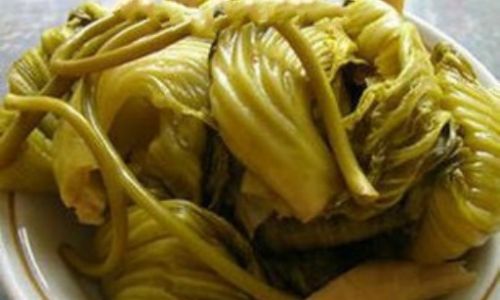Table of content
Sauerkraut, a fermented cabbage dish originating from Eastern Europe, has captured the hearts and palates of food enthusiasts worldwide. Its tangy flavor, crisp texture, and probiotic-rich benefits make it a staple in kitchens and a beloved addition to meals. However, preserving sauerkraut properly is essential to maintain its quality, extend its shelf life, and ensure safety for consumption. This article explores four straightforward yet reliable methods to preserve sauerkraut: traditional lacto-fermentation, canning, refrigeration, and freezing. Each technique offers unique advantages, catering to different needs, from retaining probiotics to achieving long-term storage. By mastering these methods, you can enjoy homemade sauerkraut’s vibrant taste and health benefits year-round.
Traditional Lacto-Fermentation: The Time-Honored Approach
Lacto-fermentation is the oldest and most authentic way to preserve sauerkraut. This method relies on natural bacteria present on cabbage leaves to convert sugars into lactic acid, creating an acidic environment that inhibits harmful microorganisms. The result is a tangy, crunchy sauerkraut packed with probiotics, enzymes, and vitamins.
Equipment and Ingredients
- Fresh green or red cabbage (avoid wilted or damaged leaves)
- Non-iodized salt (sea salt or kosher salt)
- A large mixing bowl
- A fermentation vessel (glass jar, ceramic crock, or food-grade plastic bucket)
- A weight (a smaller jar filled with water, a clean stone, or a fermentation weight)
- A breathable cloth or lid
Step-by-Step Process
- Prepare the Cabbage: Remove outer leaves, rinse the head, and pat dry. Shred the cabbage into thin strips using a knife or mandoline.
- Salt and Massage: Place the shredded cabbage in a bowl. Add 1.5–2 tablespoons of salt per 5 pounds of cabbage. Massage the cabbage for 5–10 minutes until it releases brine (liquid) and becomes limp.
- Pack the Jar: Transfer the cabbage to the fermentation vessel, pressing it down firmly to eliminate air pockets. Ensure the brine rises above the cabbage to submerge it completely.
- Add a Weight: Use a weight to keep the cabbage beneath the brine. This prevents mold growth and spoilage.
- Cover and Ferment: Cover the vessel with a cloth secured by a rubber band or a lid with an airlock. Store it in a cool, dark place (60–70°F or 15–21°C) away from direct sunlight.
- Monitor Fermentation: Check daily for the first week. Press down the cabbage if it floats and skim off any scum or mold (which is harmless if removed promptly).
- Taste Test: After 1–4 weeks, taste the sauerkraut. Fermentation time varies with temperature: cooler environments slow the process, while warmer ones accelerate it.
- Transfer to Storage: Once the desired flavor is achieved, move the sauerkraut to airtight jars or containers. Store it in the refrigerator, where it will keep for 6–12 months.
Tips for Success
- Use 2% salt by weight for optimal fermentation. Too little salt risks spoilage; too much halts bacterial activity.
- Maintain a 1–2 inch brine layer above the cabbage to prevent exposure to oxygen.
- Burp jars daily during the first week to release built-up CO2, preventing explosions.
Canning Sauerkraut: Shelf-Stable Storage for Months
Canning sauerkraut via heat processing extends its shelf life to 1–2 years. This method kills spoilage organisms but also eliminates live probiotics. However, it ensures safety and stability, making it ideal for gift-giving or stockpiling.
Water Bath Canning vs. Pressure Canning
Sauerkraut’s high acidity (pH <4.6) allows water bath canning, a simpler method than pressure canning. Ensure jars and lids are sterilized to prevent botulism, a rare but fatal risk in low-acid foods.

Step-by-Step Canning Process
- Prepare the Sauerkraut: Use fermented or fresh sauerkraut. If unfermented, add 1–2 tablespoons of salt per quart and let it sit for 1 hour to release brine.
- Pack Jars: Fill sterilized pint or quart jars with sauerkraut, leaving ½ inch headspace. Add 1–2 tablespoons of brine per jar to cover the cabbage.
- Remove Air Bubbles: Slide a non-metallic utensil (e.g., a chopstick) along the jar’s sides to release trapped air.
- Wipe Rims and Seal: Clean jar rims with a damp cloth, then secure sterilized lids and bands.
- Process in a Water Bath:
- Submerge jars in boiling water, ensuring 1–2 inches of water cover them.
- Process pints for 15 minutes and quarts for 20 minutes (adjust for altitude by adding 5 minutes per 1,000 feet above sea level).
- Cool and Store: Let jars cool undisturbed for 12–24 hours. Check seals (lid should not flex when pressed). Store in a cool, dark place.
Safety Precautions
- Never reuse lids; always use new, undamaged ones.
- Discard jars with bulging lids, leaking brine, or foul odors—signs of spoilage.
- Label jars with the date to track freshness.
Refrigeration: Quick and Convenient Short-Term Storage
Refrigeration is the simplest method for preserving sauerkraut’s crispness and flavor for 3–6 months. While it doesn’t kill bacteria, cold temperatures slow fermentation, halting significant flavor changes.
Preparation Steps
- Transfer to Airtight Containers: Use glass jars or food-safe plastic containers with tight-fitting lids.
- Submerge in Brine: Ensure sauerkraut is fully covered by its brine to prevent oxidation and spoilage.
- Store in the Fridge: Place containers in the coldest part of the refrigerator (usually the back).
Tips for Maintaining Quality
- Use a clean utensil to scoop sauerkraut to avoid introducing contaminants.
- If brine levels drop, add a 2% saltwater solution (1 teaspoon salt per cup water) to resubmerge the cabbage.
- For longer refrigeration life, consider vacuum-sealing small portions.
Freezing Sauerkraut: Preserving Nutrients and Texture
Freezing halts enzymatic activity and bacterial growth, locking in nutrients and flavor. While thawed sauerkraut loses some crispness, it remains ideal for cooked dishes like soups, stews, and casseroles.
Preparation Steps
- Blanch or Not?: Blanching (briefly boiling) sauerkraut stops enzyme activity but softens texture. Skip blanching for a crunchier result.
- Portion into Freezer Bags: Use quart- or gallon-sized bags. Press out excess air to prevent freezer burn.
- Freeze Flat: Lay bags flat on a baking sheet until frozen, then stack vertically to save space.
Thawing and Usage
- Thaw in the refrigerator overnight or add frozen sauerkraut directly to hot dishes.
- Use thawed sauerkraut within 5–7 days for optimal quality.
Additional Tips for Sauerkraut Preservation
- Flavor Variations:
- Add caraway seeds, juniper berries, or apples during fermentation for unique tastes.
- Experiment with red cabbage, carrots, or beets for colorful twists.
- Equipment Suggestions:
- Invest in a fermentation kit with airlocks and weights for hassle-free lacto-fermentation.
- Use wide-mouth jars for easier packing and cleaning.
- Labeling and Dating:
Mark jars with the preservation method and date to avoid confusion.

Common Mistakes to Avoid
- Using Iodized Salt: Anti-caking agents in table salt can inhibit fermentation. Stick to non-iodized salts.
- Ignoring Mold: While surface mold is harmless (remove it promptly), fuzzy green or black growth indicates spoilage.
- Skipping Brine Coverage: Exposed cabbage risks yeast or mold contamination.
- Overfilling Jars: Leave headspace to prevent jar breakage during canning.
Conclusion
Preserving sauerkraut is both an art and a science, offering a gateway to culinary creativity and food security. Whether you prefer the probiotic-rich tang of lacto-fermentation, the longevity of canning, the simplicity of refrigeration, or the nutrient-locking power of freezing, each method ensures your sauerkraut remains delicious and safe. Experiment with flavors, adjust techniques to your lifestyle, and savor the satisfaction of homemade preservation. With these methods in your repertoire, you’ll never run short of this versatile, healthful condiment. Happy fermenting!





0 comments